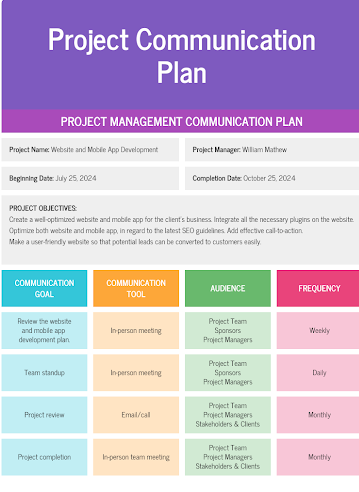You are a remote employee and a member of a dispersed team. And this is how your employer chooses to communicate organizational change while working from home…
“Beginning in June, we’re asking all employees with work-from-home arrangements to work in Yahoo! offices. If this impacts you, your management has already been in touch with next steps.
And, for the rest of us who occasionally have to stay home for the cable guy, please use your best judgment in the spirit of collaboration. Being a Yahoo isn’t just about your day-to-day job, it is about the interactions and experiences that are only possible in our offices.”
Leaves you bewildered and angry, doesn’t it? That’s exactly what the employees of Yahoo! felt when they received this from the then HR head, Jackie Reses, in 2013.
This is a classic example of poor organizational change communication.
Call it the fear of the unknown or the resistance to move out of comfort zones; the truth is almost no one likes change. As a leader, the first thing you should focus on is having a proper change management communication strategy.
The right communication tactics will help you get and keep your team onboard while reducing resistance and easing the transition.
Let’s take a look at how you can effectively communicate organizational change to your remote employees.
Create a Communication Plan

Don’t make the leadership mistake of reducing organizational change communication to a one-page memo or a 30-minute Zoom call.
There’s more to it than just making your employees aware of the change. It also involves selling them the idea and getting them invested in the initiative.
The first step is to develop a communication plan (see the example to the right) that addresses:
- What is the key message?
- Where will the communication come from?
- Which channels will you use to communicate?
- How will you deal with resistance or objections?
- What is the frequency of communication?
Creating a communication plan ensures stakeholder alignment and helps you approach this crucial process in a more structured way.
Define the Vision
Implementing company-wide change is never easy and it gets all the more challenging when dealing with a distributed workforce. To be successful, you need to effectively communicate the change vision and the outcome it will have.
The idea is to motivate your employees, get their buy-in, and help them understand the reason behind the change.
Business and management consultant John Kotter has an interesting piece of advice for creating a powerful vision for change.
He says, “A great change vision is something that is easy for people to understand. It can be written usually in a half-page, communicated in 60 seconds, is both intellectually solid but has emotional appeal, and it’s something that can be understood by the broad range of people that are ultimately going to have to change.”
Answer the WIIFM Question
Be it customer, employee, or stakeholder communication, it helps to put yourself in your audience’s shoes and answer the What’s In It For Me (WIIFM) question.
The same logic applies while communicating organizational change. To get consensus and support, explain how the change will benefit your employees.
Don’t resort to buzzwords and generic statements such as “This is for the betterment of the company” and the like. Make it meaningful. Tell your employee how the change is better for them and the company.
What if you don’t have immediate tangible benefits to offer, you ask? Be transparent about it but assure them that you’re looking into it. Your employees will be skeptical, but you would rather be honest with them than keep them in the dark.
Use Visual Aids
Organizational change happens over time. It demands constant communication, reiterations, and check-ins.
Instead of conducting a one-off virtual town hall and forgetting about it, use visual communication to support organizational change.
Not only do visual aids help you communicate complex information, but they also make it more memorable. Employees don’t have to struggle to locate (or remember) the information when leaders and communicators present useful visual aids.
Here are some visuals you can create to make the internal communication ‘stick’:
- Describe a change in the organizational hierarchy with a pyramid chart
- Procedural checklist for the change managers
- Roadmap or timeline to chalk out the change plan
- Strategy infographic to introduce the new strategy to employees
- Posters and job aids to reiterate the change initiative
And here’s an infographic used by the U.S. Government’s National Institutes of Health. It addresses frequently asked questions and shares information in a visually appealing way:

Source
Make Way for Two-way Communication
It’s important to acknowledge that, more often than not, your employees will be anxious, confused, and worried about the change. This is why you must make way for dialogue and address their concerns to ease the tension.
As you’re working remotely, you can host regular video conference “office hours” calls, Ask Me Anything (AMA) sessions, and encourage managers to schedule one-on-ones with their team members. It’s a crucial time, and your employees need to feel heard.
Microsoft did this incredibly well when CEO Satya Nadella took charge in 2014. They hosted a two-way conversation between all the employees and C-suite executives on Yammer, their team chat tool. In this monthly communication, a portion of the meeting was devoted to Q&As where employees would ask questions to the senior leaders.
Taking this critical communication step helped build a commitment to the new company culture — and helped the leadership team instill trust with employees.
How to Communicate Organizational Change: The Takeaway
Change is inevitable, but a lot depends on how you communicate that change.
These five tactics will help you communicate organizational change to your remote employees while reducing friction and keeping them invested in the initiative.
Post Views: 2,066